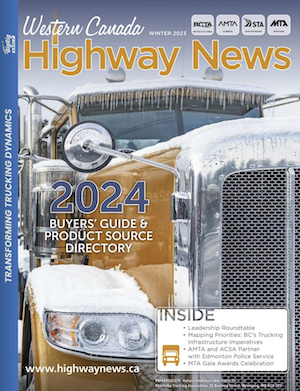Jim Olson – KPMG
If you are a federally regulated entity (including companies that meet the definition of road transportation services, inclusive of trucks and buses, that cross provincial or international borders1), you may or may not be aware that you are now subject to the Pay Equity Act.
The federal government passed the Pay Equity Act on December 13, 2018. The Act, Part II.1 of the Parliamentary Employment and Staff Relations Act and the Pay Equity Regulations came into force on August 31, 2021. Companies have three years to meet their legal requirements, which means that if your company was federally regulated on the date the Act came into force, you have until September 3, 2024, to comply. Non-compliance may be subject to penalties of $30,000 to $50,000. KPMG is currently helping many federally regulated companies, both large and small, satisfy the conditions under this Act and establish their pay equity plans.
What is pay equity? Pay equity is considered an important element of Diversity, Equity, and Inclusion (DE&I) strategies and seeks to pay employees equally for doing work of equal value. The purpose of pay equity is to address systemic gender-based discrimination in compensation traditionally experienced by employees who work in female-dominated jobs.
Transportation companies are strongly represented in the federally regulated sector, with 16%2 identifying as Road Transportation. Typically, these companies are larger, with 87% having 100 or more employees.3
If your company is federally regulated and employs over ten people, you should begin the process as soon as possible. The analysis for pay equity is rigorous and requires considerable time and resource commitments, including important considerations such as the creation of a Pay Equity Committee. The steps of a pay equity project include:
• Classifying jobs
• Determining gender predominance of job classes
• Calculating total compensation
• Evaluating job classes
• Analyzing and comparing female and male job classes
• Increasing compensation of female-dominated job classes where a pay equity gap is identified
• Maintaining pay equity on an
ongoing basis
KPMG’s team of experienced professionals has the capabilities to help transportation companies understand their legal and compliance obligations as they relate to the federal pay equity legislation. We have experience supporting both large and small organizations across Canada, including airlines, telecommunications companies, banks, and many others. We will help guide you through the multi-step pay equity process and support your business in developing a pay equity program that aligns with your corporate objectives. There are a number of ways we can assist, from training on what needs to be completed to managing the entire process on your behalf.
If you have not yet begun your compliance journey and would like to discuss it with a KPMG specialist, please contact Jim Olson, Manager, Enterprise Tax, at 306-271-2397 or Sarah Tkachuk, Partner, Regions West Tax Business Unit Leader, at 306-791-1223.
References
1 “List of Federally Regulated Industries and Workplaces.” Government of Canada. Accessed August 30, 2023. www.canada.ca/en/services/jobs/workplace/federally-regulated-industries.html.
2 “Industries Under Federal Jurisdiction.” Government of Canada. Accessed August 30, 2023. www.canada.ca/content/dam/esdc-edsc/images/corporate/reports/labour-transition-binders/minister-labour-2021/fj-industries-infographic-en.pdf.
3 “A Portrait of the Federally Regulated Private Sector.” Government of Canada. Accessed August 30, 2023. www.canada.ca/en/employment-social-development/corporate/portfolio/labour/programs/labour-standards/reports/issue-paper-portrait-federally-regulated-private-sector.html.


 1-866-985-9791
1-866-985-9791



